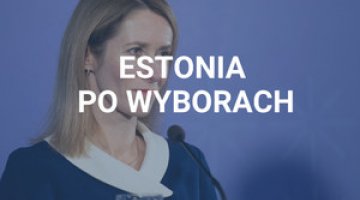Andrus Ansip again forms a centre-right government in Estonia
A new government of Estonia was sworn in on 6 April. It will once again be led by Andrus Ansip, the head of the liberal Estonian Reform Party (RE), which won the parliamentary elections in March. The prime minister’s party entered into a coalition with the right-wing party Union of Pro Patria and Res Publica led by Mart Laar. The two parties have a stable majority in parliament, which means that their chances of implementing the coalition’s programme are high. The programme envisages for example a reduction in some taxes and the achievement of a budget surplus in 2014. The economic situation is likely to help the government in achieving its goals; according to forecasts, Estonia’s GDP will grow this year by approximately 4%.
The previous centre-right government led by Ansip was the first one to have continued its rule for the full four-year term of the parliament (2007–2011) since Estonia restored independence. The greatest success of the parties who formed it was the fulfilment of the Maastricht criteria and the introduction of the euro this January. RE and IRL received more seats than before as a result of the parliamentary elections on 6 March, and thus were able to form the government again. Andrus Ansip, who has held the post of prime minister for six years, has left the same ministers in charge of the key ministries. Thus the foreign minister will still be Urmas Paet, and the Ministry of Finance will continue to be directed by Jurgen Ligi, a supporter of the restrictive fiscal policy. The greatest change, as compared to the previous cabinet, will be the participation of one of the most experienced Estonian politicians, the former prime minister, Mart Laar. This leader of the Estonian political right (who has served for example as advisor to the president of Georgia, Mikheil Saakashvili) was nominated minister of defence. <pas>





